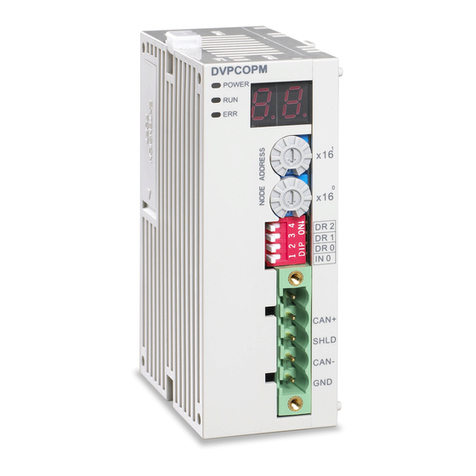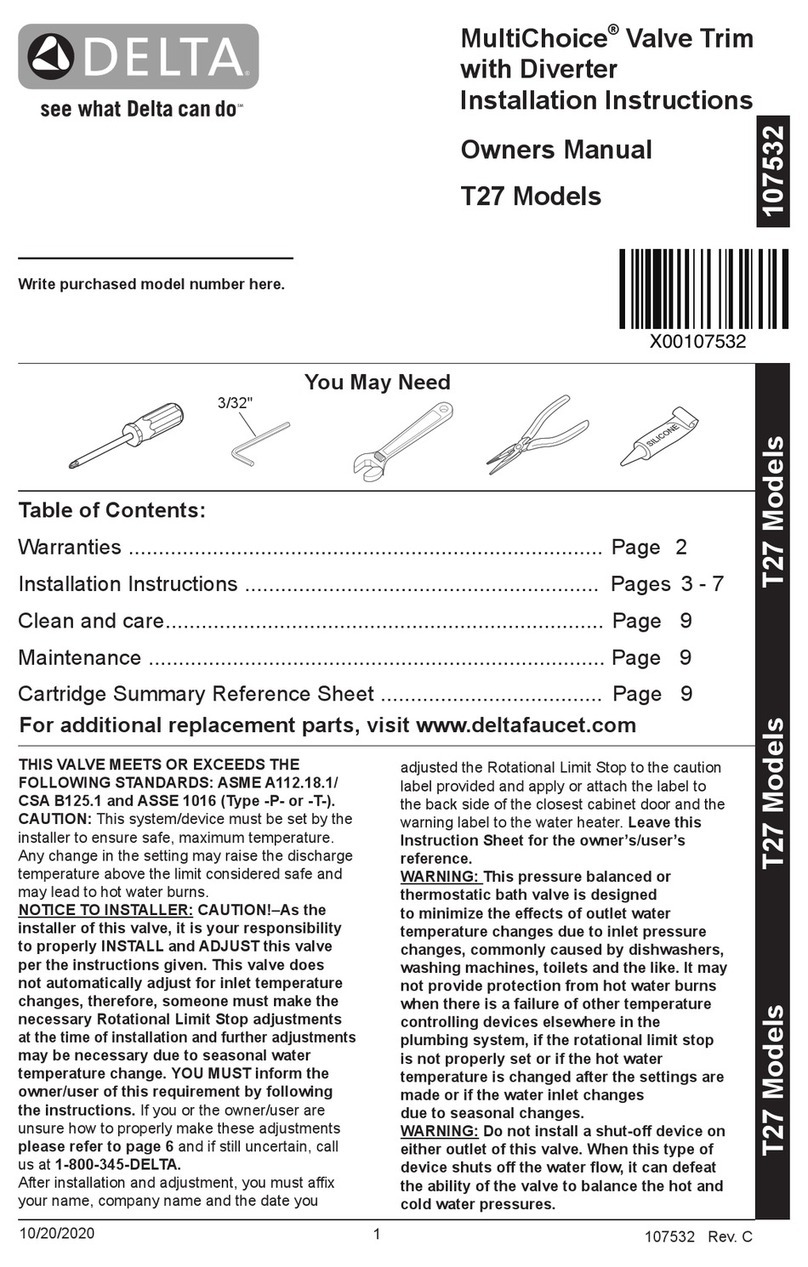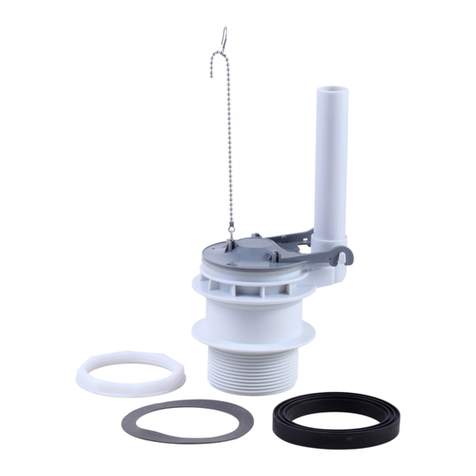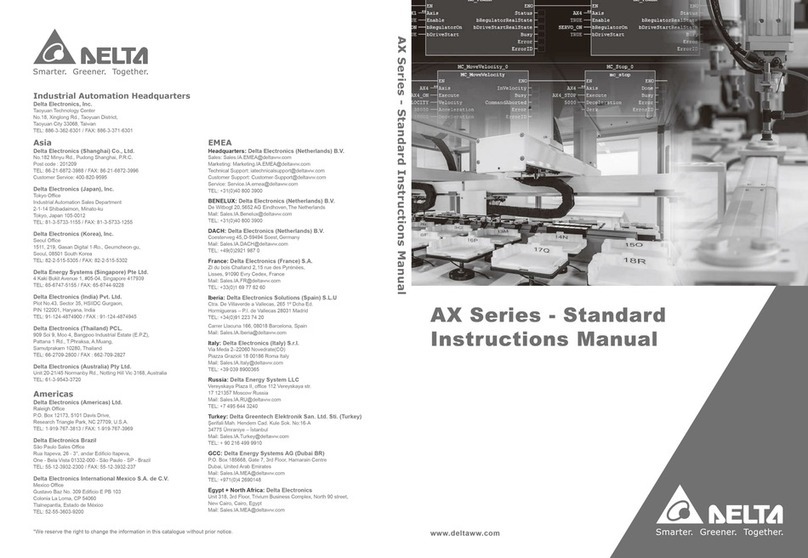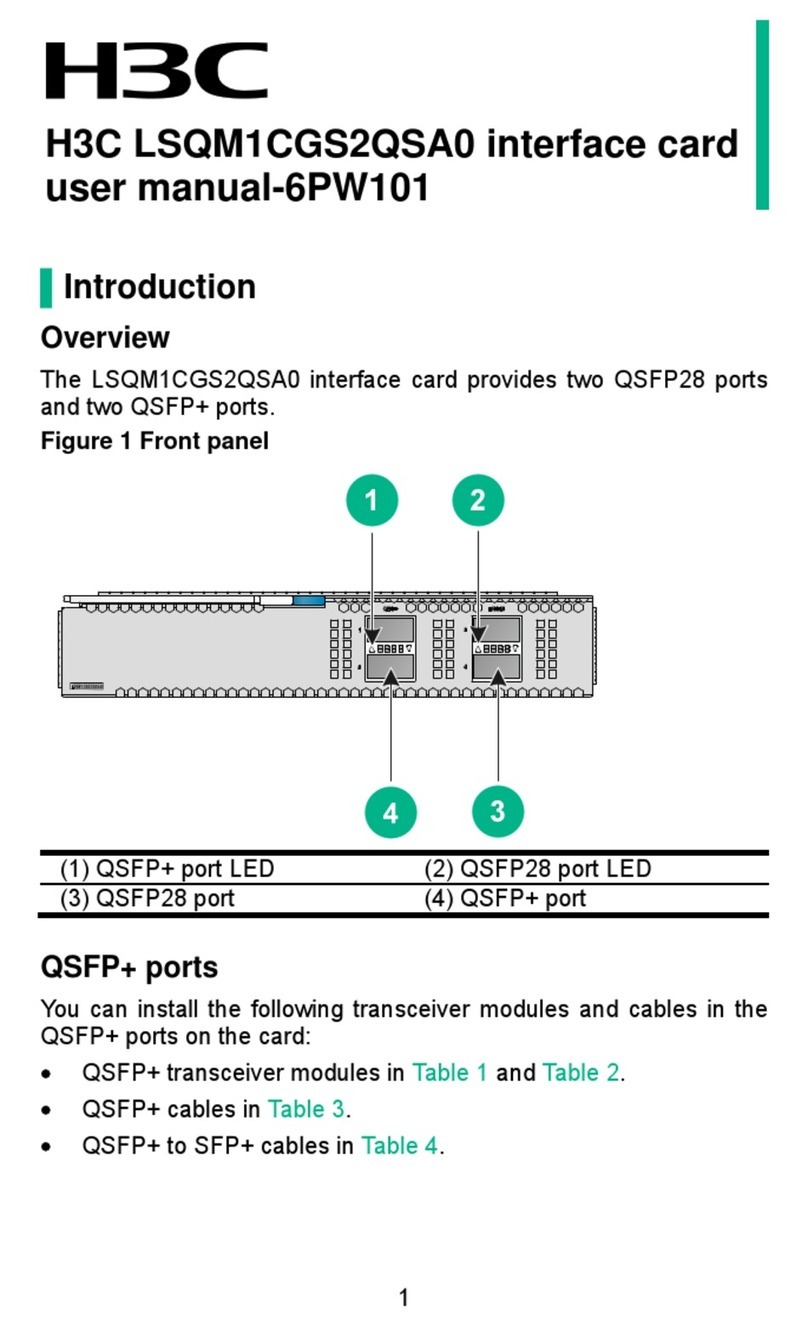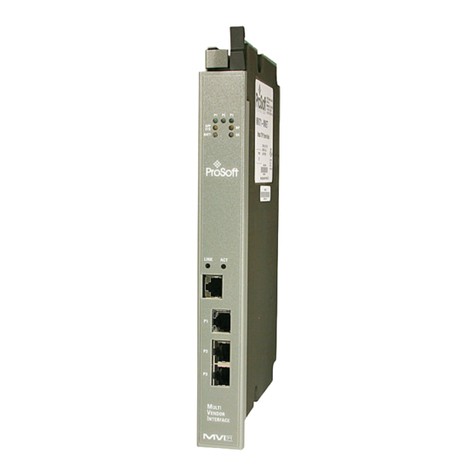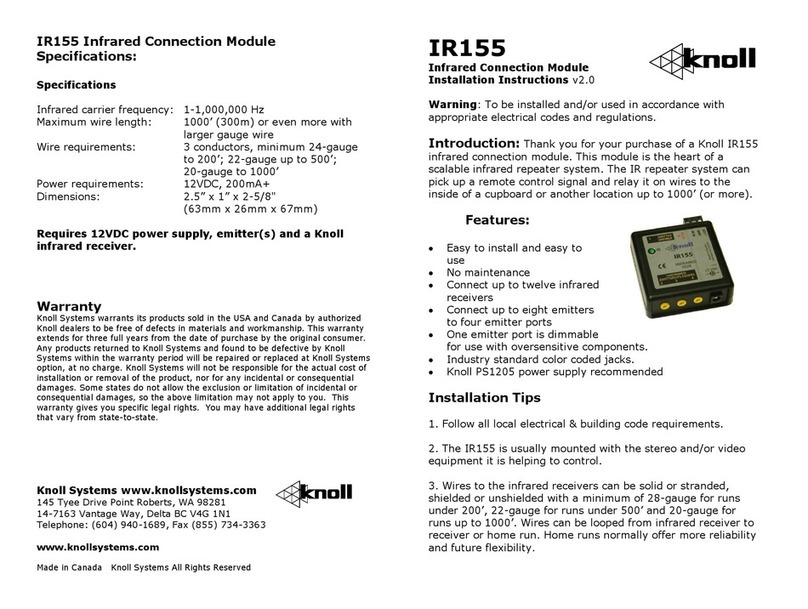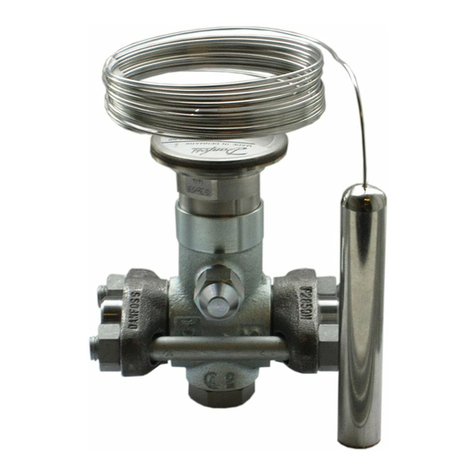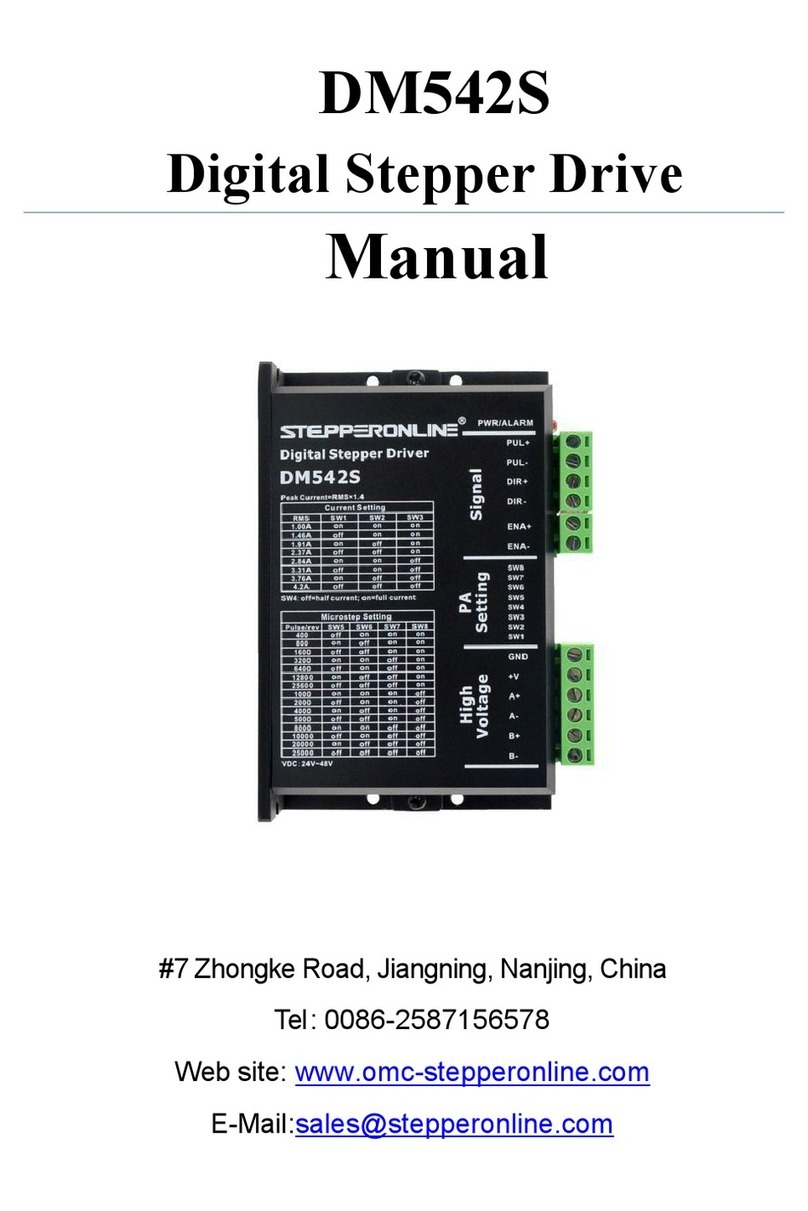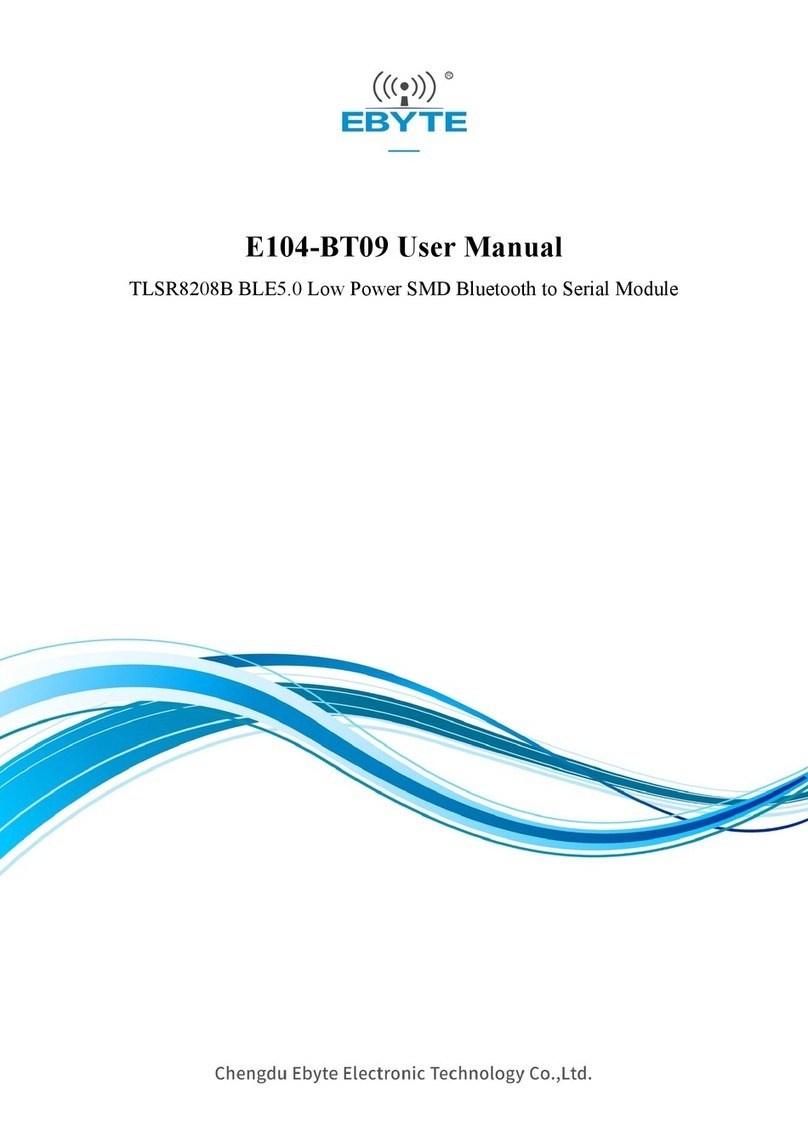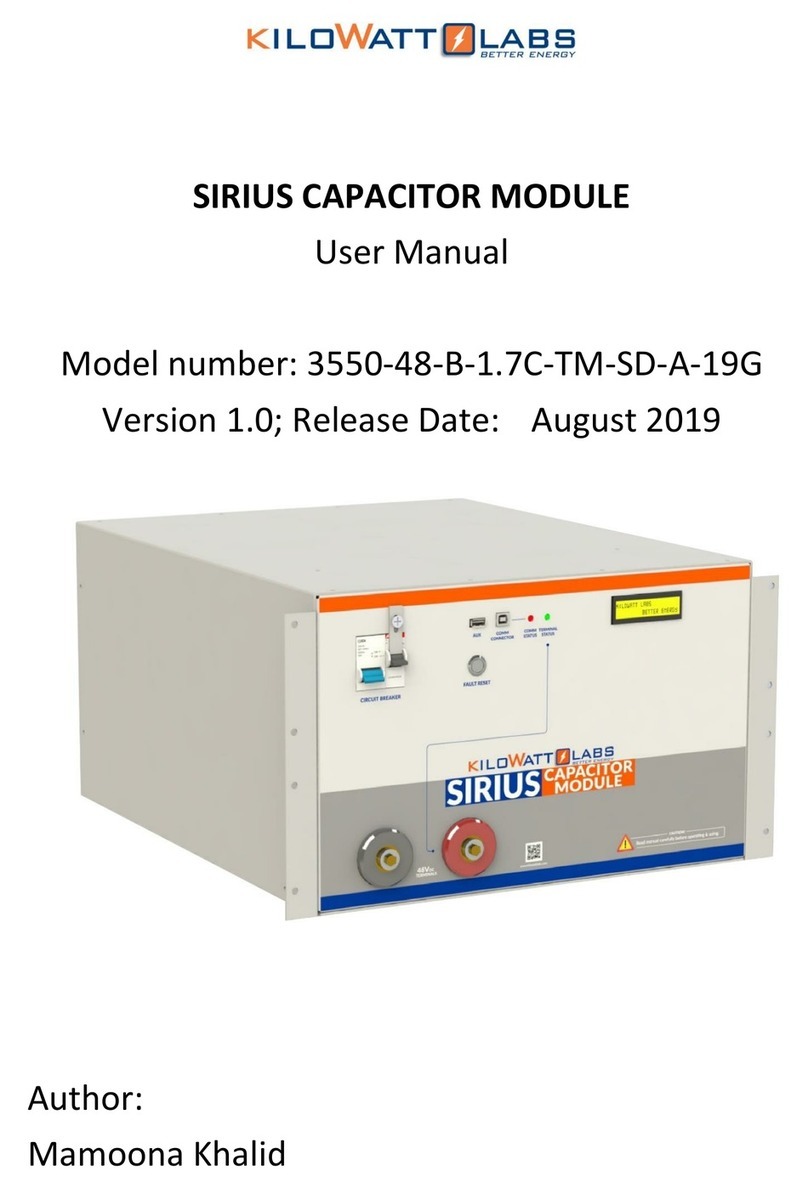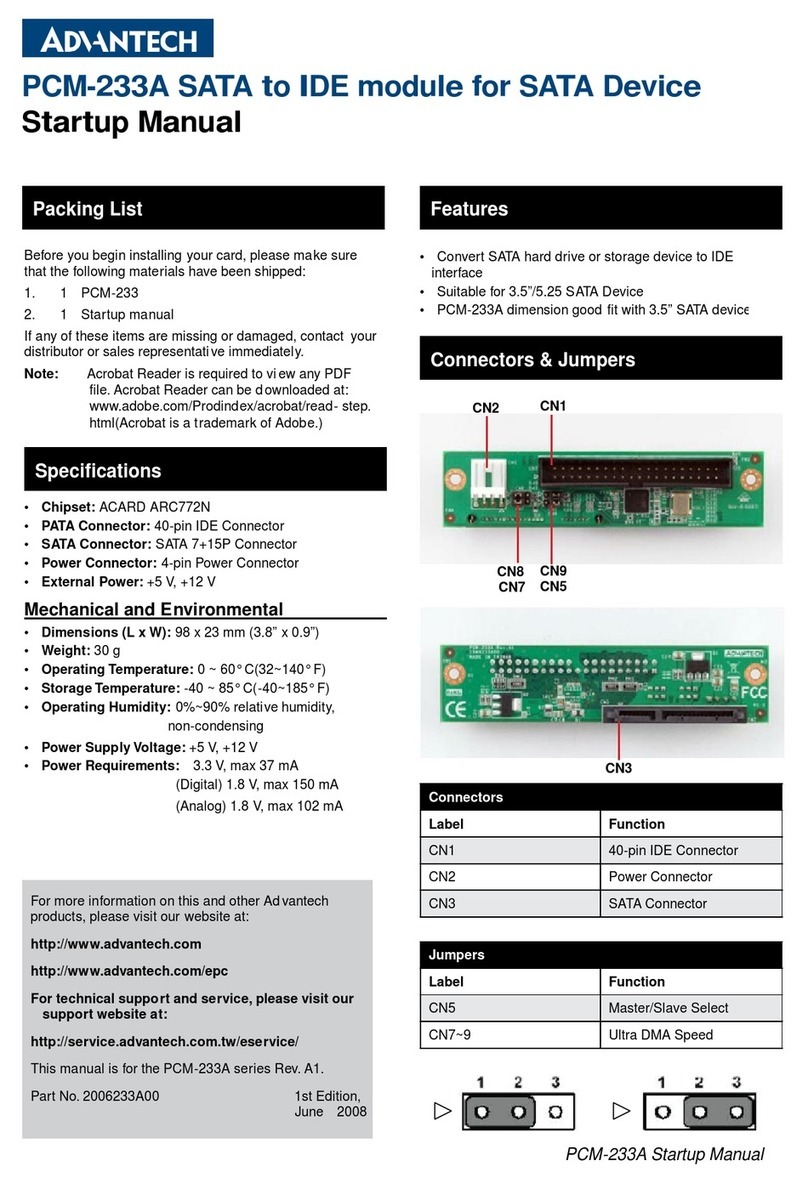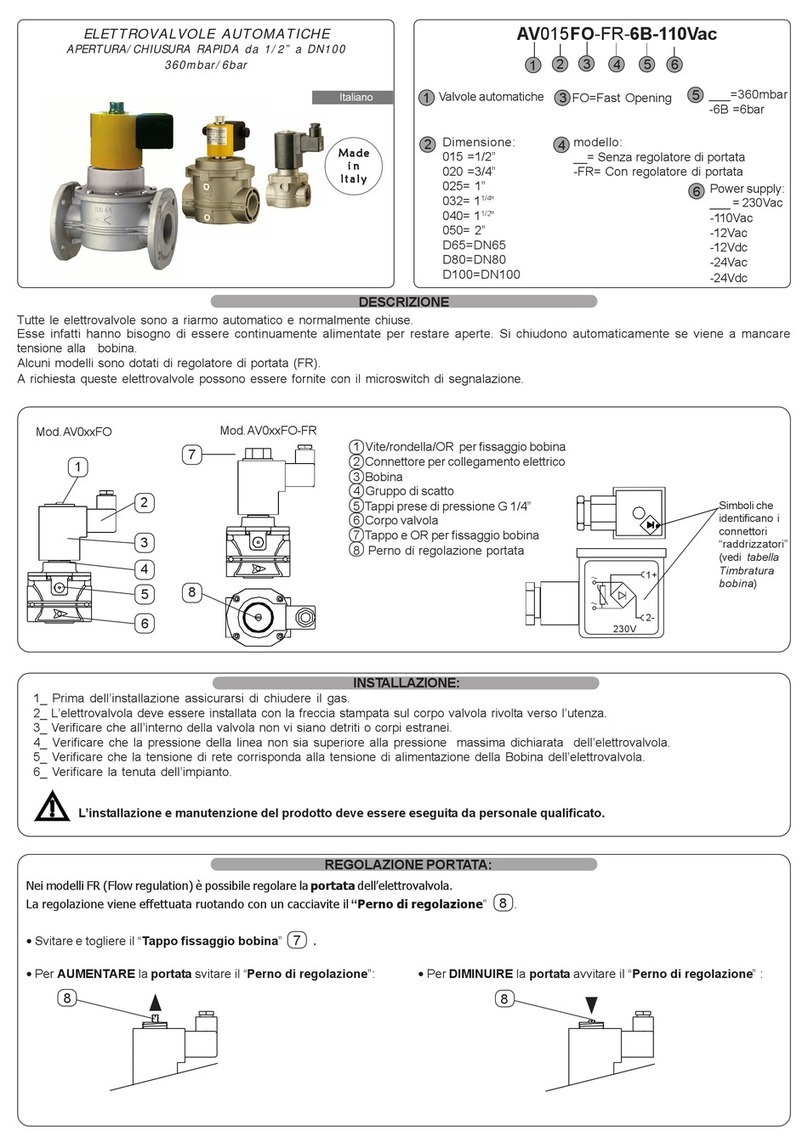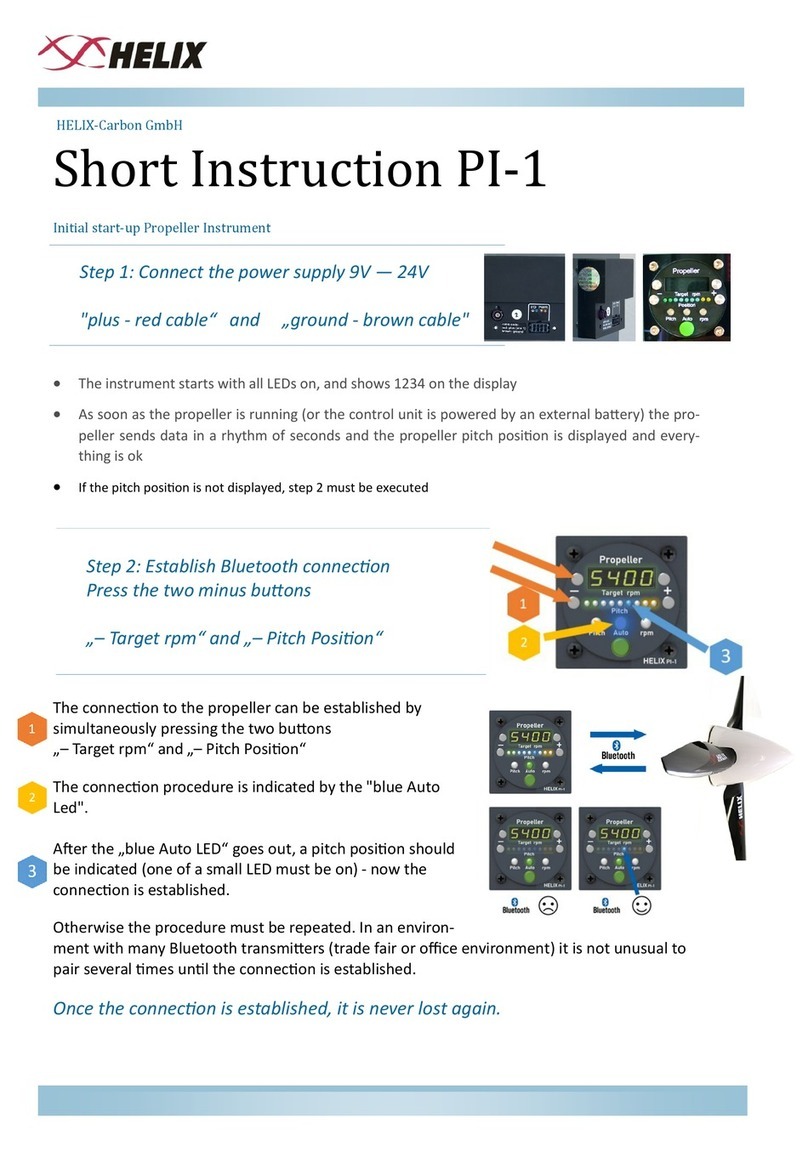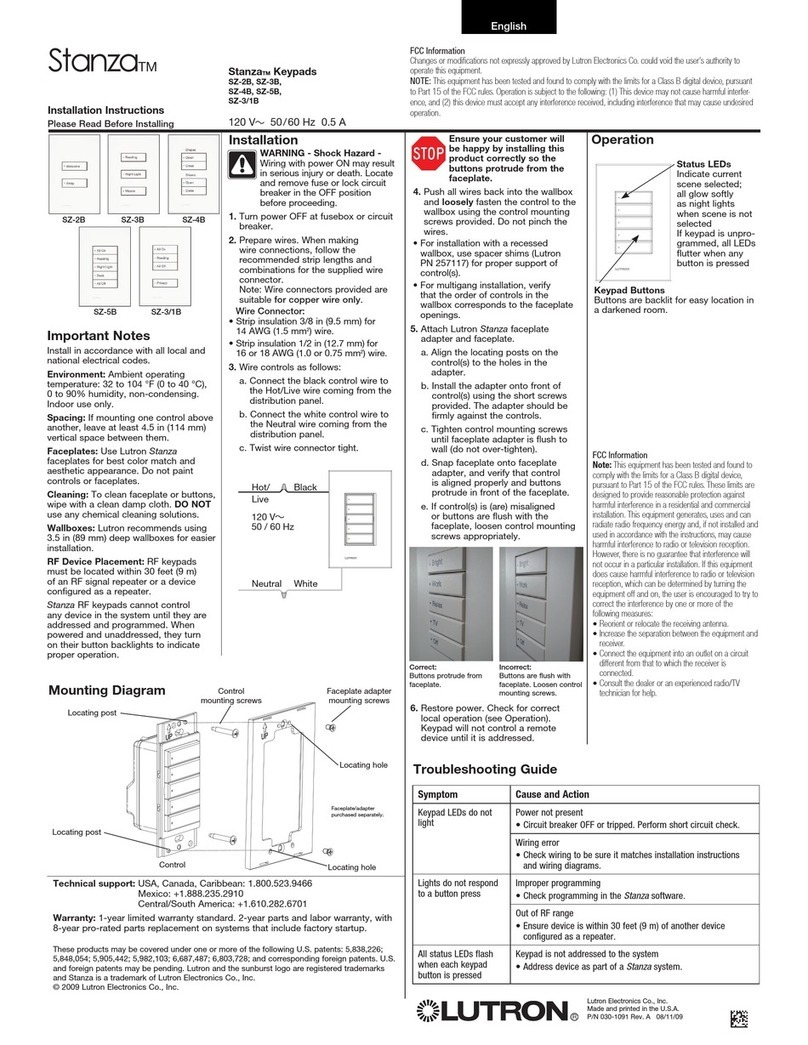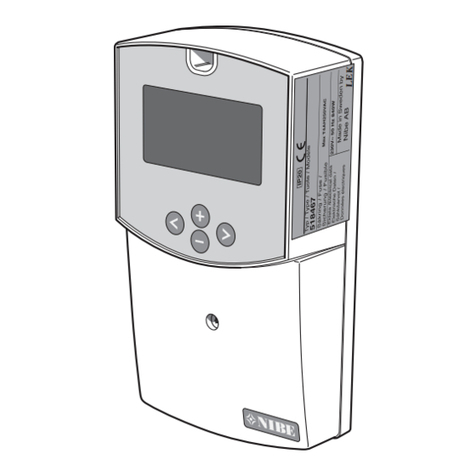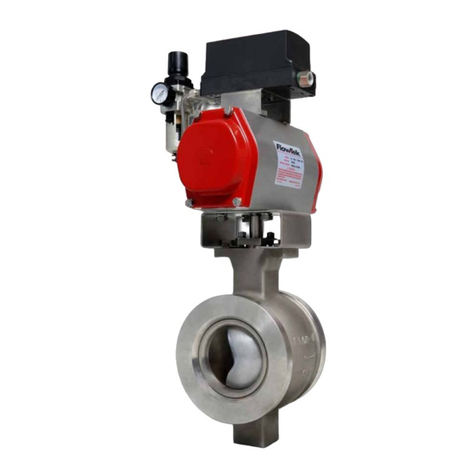Delta DVP04AD-H User manual

http://www.delta.com.tw/products/plc.asp
DVP-EH DVP04AD-H
Analog Input Module
Instruction Sheet
1 WARNING
Always read this manual thoroughly before using the DVP04AD-H.
The DC input power must be disconnected before any maintenance.
This is an OPEN-TYPE built-in DVP04AD-H, and the DVP04AD-H is certified to meet the safety
requirements of IEC 61131-2 (UL 508) when installed in the enclosure to avoid high temperature,
high humidity, exceessive vibration, corrosive gases, liquids, airbome dust or metallic particles.
Also, it is equipped with protective methods such as some special tool or key to open the
enclosure, so as to avoid the hazard to users and the damage to the DVP04AD-H.
Do not connect the AC power to any of the input/output terminals, as it might cause damage to
the DVP04AD-H. Make sure that all the wiring is well conducted prior to power on.
Do not touch the internal circuit for at least 1 minute after the power supply is disconnected.
Make sure that the DVP04AD-H is properly grounded , to avoid any electromagnetic noise.
2 INTRODUCTION
2.1 Model Explanation and Peripherals
Thank you for choosing DELTA’s PLC DVP Series. The analog input module receives external
4-point analog signal input (voltage or current) and transforms it into 14 bits digital signal. The
analog input module of DVP04AD-H series can read/write the data of analog input module by
using commands FROM / TO via DVP-PLC EH Series MPU program. There are 49 CR(Control
Register) in each module and there are 16 bits in each register.
DVP04AD-H analog input module can update software version by RS-485 communication.
Users can select input from voltage or current via wiring. Voltage input range is ±10V DC
(resolution is 1.25 mV). Current input range is ±20 mA (resolution is 5 µA).
Nameplate Explanation
20.4VDC ~ 28.8VDC
04AD-H0T4120001
VX.XX
-10V ~ +10V or -20mA ~+20mA
1.25mV or 5 A
Model Name
Input power supply spec.
Analog input/output module spec.
Barcode
Model Explanation
Serial NumberModel
Product Series
Input+Output point
Model type
AD: Analog input module
DA: Analog output module
PT: Platinum temperature sensors(PT-100)
TC: Thermocouple sensors(Type J/K)
S: for SS series MPU
P: for EP series MPU
H: for EH series MPU
Production week
Production place (Taoyuan)
Production year (2004)
Production Model
XA: A/D , D/A Functions
RT: Resistor Thermocouple
HC: High speed count input module
PU: single axis positioning unit
2.2 Product Profile and Outline
Unit: mm
1. DIN rail location (35mm) 6. Terminals
2. Mounting hole to connect expansion
unit/expansion module
7. Expansion hole of the expansion unit
mounting pins
3. Model name 8. Terminal layout
4. Indicator LED for power, error and run state 9. Mounting port to connect expansion
unit/expansion module
5. DIN rail clip
2.3 External wiring
CH1
104.7K
250
shielding cable*1
voltage input
-10V~+10V
V+
I+
COM
CH1
104.7K
CH4
104.7K
250
current input
-20mA~+20mA V+
I+
COM
CH4
104.7K
*5
*2
AG
AG
24+
24-
Class 3 Grouning
DC/DC
converter
+15V
-15V
AG
FG
FG
*3
*4
shielding cable*1
terminal of power module
System Grounding
(100 or less)
Note 1: Please isolate analog input and other
power wiring.
Note 2: If connect to current signal, please short
circuit between V+ and I+ terminals.
Note 3: If noise is too loud, please connect FG
to grounding.
Note 4: Please connect terminal of power
module and terminal of analog
input module to system earth point and
make system earth point be grounding
or connects to machine cover.
Note 5: If wave of input terminal of loaded is too
big that noise interferes wiring, please
connect capacitance with 0.1~0.47µF
25V.
Warning: DO NOT wire to the No function
terminal ●.
3 STANDARD SPECIFICATIONS
3.1 Function Specifications
Analog/ Digital (4A/D) module Voltage input Current input
Power supply voltage 24 VDC(20.4VDC~28.8VDC) ( –15%〜+20%)
Analog input channel 4 channel / each module
Analog input range ±10V ±20 mA
Digital conversion range ±8000 ±4000
Resolution 14 bits(1LSB=1.25 mV) 13 bits (1LSB=5 µA)
Input impedance 200 KΩor above 250Ω
Overall accuracy ±0.5% of full scale of 25℃(77℉)
±1% of full scale during 0~55℃(32~131℉)
Response time 3 ms ×channels
Isolation Method It has isolation between digital area and analog area. There is no
isolation among channels.
Absolute input range ±15 V ±32 mA
Digital data format 2’s complementary of 16-bit, 13 Significant Bits
Average function Yes (CR#2~CR#5 can be set and setting range is K1~K4096)
Self diagnose function Upper and lower bound detection / channels
Communication mode
(RS-485)
Yes, there are ASCII/RTU modes, communication rate can be 4800
/9600 /19200 /38400 /57600 /115200. Communication format of ASCII
mode is 7Bit, even bit, 1 stop bit (7 E 1). Communication format of
RTU mode is 8Bit, even bit, 1 stop bit (8 E 1). When connecting to
PLC MPU in series, RS-485 can’t be used.
Connect to DVP-PLC MPU
in series
The input point of the first analog extension unit it connects from the
near to the distant is from 0 to 7. The Max. is 8 modules and it won’t
waste digital I/O point.
3.2 Other Specification
Power Specification
Max. Rated Consuming Power 24 VDC(20.4VDC~28.8VDC) ( –15%~+10%), 2W, supply from
external power
Environment Condition
Environment Condition It is the same with DVP-PLC MPU.
Spec. of Prevent Static Electricity All places between terminal and grounding
4 CR (Control Register)
DVP04AD-H analog signal input module Explanation
CR
No.
RS-485
Parameter
address
Latched Register name b15 b14 b13 b12 b11 b10 b9 b8 b7 b6 b5 b4 b3 b2 b1 b0
#0 H 4000
○R Model type System used. DVP04AD-H model code =H 400
reserved CH4 CH3 CH2 CH1#1 H 4001
○R/W Input mode setting
Input mode setting: factory setting is H0000.
Mode 0: input voltage mode (-10V~+10V).
Mode 1: input voltage mode (-6V~+10V).
Mode 2: input current mode (-12mA~+20mA)
Mode 3: input current mode (-20mA~+20mA)
Mode 4: none use.
#2 H 4002
○R/W CH1 average times
#3 H 4003
○R/W CH2 average times
#4 H 4004
○R/W CH3 average times
#5 H 4005
○R/W CH4 average times
Average times setting of channel CH1~CH4. Setting range is K1~K4096 and factory
setting is K10.
#6 H 4006
╳R average value of CH1
input signal
#7 H 4007
╳R average value of CH2
input signal
#8 H 4008
╳R average value of CH3
input signal
#9 H 4009
╳R average value of CH4
input signal
Display average value of CH1~CH4 input signal
#10 ~ #11 Reserved
#12 H 400C ╳R present value of CH1
input signal
#13 H 400D ╳R present value of CH2
input signal
Display present value of CH1~CH2 input signal
DVP04AD-H analog signal input module Explanation
CR
No.
RS-485
Parameter
address
Latched Register name b15 b14 b13 b12 b11 b10 b9 b8 b7 b6 b5 b4 b3 b2 b1 b0
#14 H 400E ╳R present value of CH3
input signal
#15 H 400F ╳R present value of CH4
input signal
Display present value of CH3~CH4 input signal
#16 ~ #17 Reserved
#18 H 4012 ○R/W To adjust OFFSET
value of CH1
#19 H 4013 ○R/W To adjust OFFSET
value of CH2
#20 H 4014 ○R/W To adjust OFFSET
value of CH3
#21 H 4015 ○R/W To adjust OFFSET
value of CH4
Offset setting of CH1~CH4. Factory setting is K0 and unit is LSB.
Voltage input: setting range is K-4000 ~K4000
Current input: setting range is K-4000 ~K4000
#22 ~ #23 Reserved
#24 H 4018 ○R/W To adjust GAIN value
of CH1
#25 H 4019 ○R/W To adjust GAIN value
of CH2
#26 H 401A ○R/W To adjust GAIN value
of CH3
#27 H 401B ○R/W To adjust GAIN value
of CH4
GAIN setting of CH1~CH4. Factory setting is K4000 and unit is LSB.
Voltage input: setting range is K-3200 ~K16000.
Current input: setting range is K-3200 ~K10400.
#28 ~ #29 Reserved
#30 H 401E ╳R Error status It is the data register to save all error status. Please refer to fault code chart for detail.
#31 H 401F ○R/W Communication
address setting
Setting RS-485 communication address. Setting range is 01~255 and factory setting
is K1
#32 H 4020 ○R/W Communication baud
rate setting
It is used to set communication baud rate (4800, 9600, 19200, 38400, 57600,
115200bps). Communication format: ASCII mode is 7Bit, even bit, 1 stop bit (7 E 1).
Communication format of RTU mode is 8Bit, even bit, 1 stop bit (8 E 1).
b0: 4800 bps (bit/sec). b1: 9600 bps (bit/sec). (factory setting)
b2: 19200 bps (bit/sec). b3: 38400 bps (bit/sec).
b4: 57600 bps (bit/sec). b5: 115200 bps (bit/sec).
b6-b13:reserved.
b14: exchange low and high byte of CRC check code (only for RTU mode)
b15: ASCII / RTU mode selection
b15 b14 b13 b12 b11 b10 b9 b8 b7 b6 b5 b4 b3 b2 b1 b0
Reserved CH4 CH3 CH2 CH1
#33 H 4021 ○R/W Reset to factory
setting and set
characteristics
adjustable priority
Factory setting is H0000.
Give CH1 setting for example:
1. When b0=0, user can set OFFSET and GAIN value of CH1 (CR#18, CR#24).
When b0=1, inhibit user to adjust OFFSET and GAIN value of CH1 (CR#18,
CR#24).
2. b1 means if characteristic register is latched. b1=0 (factory setting, latched), b1=1
(not latched).
3. When b2 is set to 1, all settings will reset to factory setting.
#34 H 4022 ○R Software version It is hexadecimal to display software version. For example: H 010A means 1.0A.
#35~#48 System used
○means latched.
╳means not latched.
R means can read data by using FROM command or RS-485.
W means can write data by using TO command or RS-485.
LSB (Least Significant Bit): 1. Voltage input: 1LSB=10V/8000=2.5mV. 2. Current input: 1LSB=20mA/4000=5µA.
Explanation:
1. CR#0: The content of CR#0 is model type, user can read the data from program to know if there
is extension module.
2. CR#1: CR#1 is used to set 4 inner channels working mode of analog input module. Every
channel has four modes to set and can be set individually. For example: if setting CH1 to mode 0
(b2~b0=000), CH2 to mode 1(b5~b3=001), CH3: mode2 (b8~b6=010), CH4: mode
3(b11~b9=011). It needs to set CR#1 to H0688 and the upper bit (b12~b15) will reserved. The
factory setting of CR#1 is H0000.
3. CR#2 ~ CR#5: it is used to set average times of CH1~CH4. Setting range is K1~K4096 and
factory setting is K10.
4. CR#6 to CR#9 are the average value that calculates according to the value that is set in
CR#2~CR#5 (average time of CH1~CH4 input signal). For example, if CR#2 (the average times
of CH1) is 10, it will calculate the average of CH1 input signal every 10 times.
5. CR#10, CR#11, CR#16, CR#17, CR#22, CR#23, CR#28, CR#29 reserved.
6. CR#12 ~ CR#15: display present value of CH1~CH4 input signal.
7. CR #18~ CR #21: the content is the value of adjusting OFFSET value of CH1~CH4 if analog
input voltage or current is 0 after it transfers from analog to digital. Voltage setting range:
-5V~+5V(-4000LSB~+4000LSB). Current setting range: -20mA~+20mA (-4000LSB~+4000LSB).
8. CR #24~ CR #27: means analog input voltage or current when conversion value from analog
signal to digital is 4000. Voltage setting range: -4V~+20V(-3200LSB~+16000LSB). Current setting
range: -16mA~+52mA(-3200LSB ~+10400LSB). But it needs to notice that GAIN VALUE – OFFSET
VALUE = +800LSB~+12000LSB (voltage) or +800LSB~+6400LSB (current). When this value under this
range, the resolution of the input signal will be thin and the variation of value will be larger. When
this value exceeds this range, the resolution of input signal will be thick and the variation of value
will be smaller.
9. CR#30 is fault code. Please refer to the following chart.
Fault description Content b15~b8 b7 b6 b5 b4 b3 b2 b1 b0
Power source abnormal K1(H1) 0 0 0 0 0 0 0 1
Analog input value error K2(H2) 0 0 0 0 0 0 1 0
Setting mode error K4(H4) 0 0 0 0 0 1 0 0
Offset/Gain error K8(H8) 0 0 0 0 1 0 0 0
Hardware malfunction K16(H10) 0 0 0 1 0 0 0 0
Digital range error K32(H20) 0 0 1 0 0 0 0 0
Average times setting error K64(H40) 0 1 0 0 0 0 0 0
Command error K128(H80)
Reserved
10000000
Note: Each fault code will have corresponding bit (b0~b7). Two or more faults may happen at
the same time. 0 means normal and 1 means having fault.
10. CR#31: it is used to set RS-485 communication address. Setting range is 01~255 and factory
setting is K1.

11. CR#32 is used to set RS-485 communication baud rate: 4800, 9600, 19200, 38400, 57600,
115200 bps. b0: 4800bps. b1: 9600bps. (factory setting) b2: 19200bps. b3: 38400 bps. b4:
57600 bps. b5: 115200 bps. b6-b13: reserved. b14: exchange low and high byte of CRC
check code. (only for RTU mode) b15=0: ASCII mode. b15=1: RTU mode. Communication
format: ASCII mode is 7Bit, even bit, 1 stop bit (7 E 1). Communication format of RTU mode
is 8Bit, even bit, 1 stop bit (8 E 1).
12. CR#33 is used to set the inner function priority. For example: characteristic register. Output
latched function will save output setting in the inner memory before power loss.
13. CR#34: software version.
14. CR#35~ CR#48: system used.
15. The corresponding parameters address H4000~H4030 of CR#0~CR#48 can provide user to
read/write data by RS-485.
A. Communication baud rate: 4800, 9600, 19200, 38400, 57600, 115200 bps.
B. Communication format: ASCII mode is 7Bit, even bit, 1 stop bit (7 E 1). Communication
format of RTU mode is 8Bit, even bit, 1 stop bit (8 E 1).
C. Function code: 03H—read data from register. 06H—write a WORD into register.
10H—write many WORDs into register.
5 Adjust A/D Conversion Characteristic Curve
5.1 Adjust A/D Conversion Characteristic Curve
Voltage input mode
Mode 0 of CR#1 GAIN=5V (4000LSB),
OFFSET=0V (0LSB)
Mode 1 of CR#1 GAIN=6V (4800LSB),
OFFSET=2V (1600LSB)
GAIN: Voltage input value when digital
output is 4000. Setting range is
-4V~+20V (-3200LSB~ +16000LSB)
OFFSET: Voltage input value when digital
output is 0.
Setting range: -5V~+5V (-4000LSB ~
+4000LSB)
+8000
+4000
-4000
10V
-8000
-6V-10V
6V5V
2V
0
GAIN
OFFSET
Digital
output
Voltage input
mode 0
mode 1
GAIN-OFFSET: Setting range is +1V~+15V
(+800LSB~ +12000LSB)
Current input mode:
Mode 2 of CR#1 GAIN = 20mA (4000LSB),
OFFSET=4mA (800LSB).
Mode 3 of CR#1 GAIN = 20mA (4000LSB),
OFFSET=0mA (0LSB).
GAIN: Current input value when digital
output is +4000. Setting range is -20
mA~+20 mA (-4000LSB ~ +4000LSB )
OFFSET: Current input value when digital
output value is 0. Setting range is-16
mA ~+52 mA (-3200LSB ~ +10400LSB)
+4000
-4000
-12mA-20mA
4mA
0
OFFSET
20mA
GAIN
Digital
output
current input
mode 3
mode 2
GAIN-OFFSET: Setting range is +4mA ~ +32mA
(800LSB~ +6400LSB)
The chart above is to adjust A/D conversion characteristic curve of voltage input mode and
current input mode. Users can adjust conversion characteristic curve by changing OFFSET values
(CR#18~CR#21) and GAIN values (CR#24~CR#27) depend on application.
LSB(Least Significant Bit): 1. voltage input: 1LSB=10V/8000=1.25mV. 2. current input:
1LSB=20mA/4000=5µA.
5.2. Program Example for Adjusting A/D Conversion Characteristics Curve
Example 1: setting OFFSET value of CH1 to 0V(=K0LSB) and GAIN value of CH1 to 2.5V(=K2000LSB).
X0
K2000
K24
H0 K1
K0
K1
H0 K1
M1002
K0
K33
K1
K0 K1
K18 K0
K0
TO
TO
TO
TO
Writing H0 to CR#1 of analog
input module no. 0 and set CH1
to mode 0 (voltage input
-10V~+10V)
Writing H1 to CR#33 and allow to
adjust characters of CH1.
When X0 switches from Off to
On, K0LSB of OFFSET value will
be wrote in CR#18 and K2000LSB
of GAIN value will be wrote in
CR#24.
Example 2: setting OFFSET value of CH2 to 2mA(=K400 LSB) and GAIN value of CH2 to 18 mA
(=K3600LSB)
X0
K1
K0
K1
H0 K1
M1002
K0
K33
K1
K0 K1
K0 H18
K19
K25
K400
K3600
TO
TO
TO
TO
Writing H18 to CR#1 of analog
input mode no. 0 and set CH2 to
mode 3 (current input: -20 mA ~
+20mA)
Writing H0 to CR#33 and allow to
adjust characteristics of CH4.
When X0 switches from Off to
On, K400LSB of OFFSET value will
be wrote in CR#19 and K3600LSB
of GAIN value will be wrote in
CR#25.
6 Initial PLC Start-up
Lamp display:
1. When power is on, POWER LED will be lit and ERROR LED will be lit for 0.5 second.
2. When it is normal that POWER LED should be lit and ERROR LED should turn off. When
power supply is lower than 19.5V, ERROR LED will blink continuously till the power supply
is higher than 19.5V.
3. When it connects to PLC MPU in series, RUN LED on MPU will be lit and A/D LED or D/A
LED should blink.
4. After receiving the first RS-485 command during controlling by RS-485, A/D LED or D/A
LED should blink.
5. After converting, ERROR LED should blink if input or output exceeds upper bound or lower
than lower bound.
Example:
K1
K0 K1 K1
K0
K0
K0
M1000
FROM
TO
END
K2
K6
D0
H3030
K32
D20 K4FROM
TO
K0
K2
= H400 D0
M1002
= H400 D0
Explanation:
Reading the data of model type from extension module K0 and distinguish if the data is H400
(DVP04AD-H model type).
If the model type is DVP04AD-H, M11 is on and the setting input mode is (CH1, CH3)= mode 0,
(CH2, CH4)= mode 3.
Setting the average times of CH1 and CH2 are K32.
Reading the input signal average value of CH1~CH4 (4 data) saving in D20~D23.
7 Related Instructions Explanation
API Adaptive model
ES EP EH
78 D FROM PRead special module
CR data
Bit device Word device
X Y M S K H KnX KnY KnM KnS T C D E F
m1¼¼
m2¼¼
D ¼ ¼ ¼ ¼ ¼ ¼ ¼ ¼
n ¼¼
Note: The usage range of operand m1is 0~7.
The usage range of operand m2: ES/EP:
0-48, EH: 0-254.
The usage range of operand n: ES/EP: n=
1~(49-m2), EH: 1~(255-m2).
ES series model doesn’t support pulse
execution command (FROMP, DFROMP).
16-bit command (9 STEPS)
FROM Continuous
execution FROMP Pulse
execution
32-bit command (17 STEPS)
DFROM Continuous
execution DFROMP Pulse
execution
Flag: When M1083=On, it allows to
insert interrupt during
FROM/TO.
Refer to following for detail.
Command
Explanation
: the number for special module. : the number of CR (Control Register) of
special module that will be read. : the location to save reading data. : the
data number of reading one time.
DVP-series PLC uses this command to read CR data of special module.
: When assigning bit operand, K1~K4 can be used for 16-bit and K5~K8 can be
used for 32-bit.
Please refer the following footnote for calculating of special module number.
Program
Example
To read the content of CR#24 of special module#0 to D0 of PLC and to read the
content of CR#25 of special module#0 to D1 of PLC. It can read 2 data in one time
(n=2).
The command will be executed when X0=On. The command won’t be executed
when X0=Off and the content of previous reading data won’t change.
X0
FROM K0 K24 D0 K2
API Adaptive model
ES EP EH
79 DTO P
Special module CR
data write in
Bit device Word device
X Y M S K H KnX KnY KnM KnS T C D E F
m1¼¼
m2¼¼
S ¼¼¼¼¼¼¼¼¼¼ ¼
n ¼¼
Note: The usage range of operand m1is 0~7.
The usage range of operand m2: ES/EP: 0-48,
EH: 0-254.
The usage range of operand n: ES/EP: n=
1~(49-m2), EH: 1~(255-m2).
For ES series, it doesn’t support pulse
execution command (TOP, DTOP)
16-bit command (9 STEPS)
TO Continuous
execution TOP Pulse
execution
32-bit command (17 STEPS)
DTO Continuous
execution DTOP Pulse
execution
Flag: When M1083=On, it allows
to insert interrupt during
FROM/TO.
Refer to following for detail.
Command
Explanation
: the number of special module. : the number of CR (Control Register)
of special module that will be wrote in. : the data to write in CR. : the
data number to write in one time.
DVP-series PLC uses this command to write data into CR of special module.
: When assigning bit operand, K1~K4 can be used for 16-bit and K5~K8 can
be used for 32-bit.
Program
Example
Using 32-bit command DTO, program will write D11 and D10 into CR#3 and CR#2
of special module#0. It only writes a group of data in one time (n=1).
The command will be executed when X0=On and it won’t be executed when
X0=Off. The data that wrote in previous won’t have any change.
X0
K0 K2 D0DTO K1
Footnote
The rule of command operand:
m1: arrangement number of special module. The number of special module
that connects to PLC MPU. The numbering order of special module from the
near to the distant of MPU is from 0 to 7. The maximum is 8 special modules
and won’t occupy I/O point.
m2: the number of CR. Built in 16-bit of 49 groups memory of special module
is called CR (Control Register). The number of CR uses decimal digital
(#0~#48). All running status and setting values of special module has
included.
If using FROM/TO command, the unit of read/write of CR is one number for
one time. If using DFROM/DTO command, the unit of read/write of CR is two
numbers in one time.
CR #10 CR #9
Upper 16-bit Lower 16-bit
Specified CR number
The number of transmission groups n. The meaning of n=2 of 16-bit command
and n=1 of 32-bit are the same.
D0
D1
D2
D3
D4
D5
CR #5
CR #6
CR #7
CR #8
CR #9
CR #10
D0
D1
D2
D3
D4
D5
CR #5
CR #6
CR #7
CR #8
CR #9
CR #10
Specified device Specified C
R
Specified device Specified CR
16-bit command when n=6 32-bit command when n=3
In ES series models, flag M1083 is not provided. When FROM/TO command is
executed, all interrupts (including external or internal interrupt subroutines) will be
disabled. All interrupts will be executed after completing FROM/TO command.
Besides, FROM/TO command also can be executed in the interrupt subroutine.
The function of the flag M1083 (FROM/TO mode exchange) provided in EP/EH
series models:
1. When M1083=Off, FROM/TO command is executed, all interrupts (including
external or internal interrupt subroutines) will be disabled. All interrupts will be
executed after completing FROM/TO command. Besides, FROM/TO
command also can be executed in the interrupt subroutine.
2. When M1083=On, if an interrupt occurs while FROM/TO command has been
programmed, FROM/TO command will be interruptted to execute the interrupt.
However, FROM/TO command cannot be executed in the interrupt subroutine.
Other Delta Control Unit manuals

Delta
Delta AC-160-DIN User manual

Delta
Delta DVPEN01-SL User manual
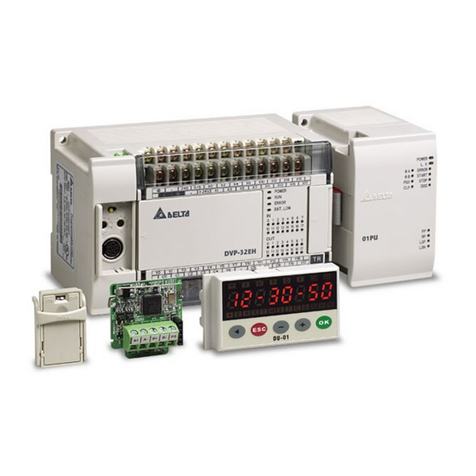
Delta
Delta DVP06XA-H User manual
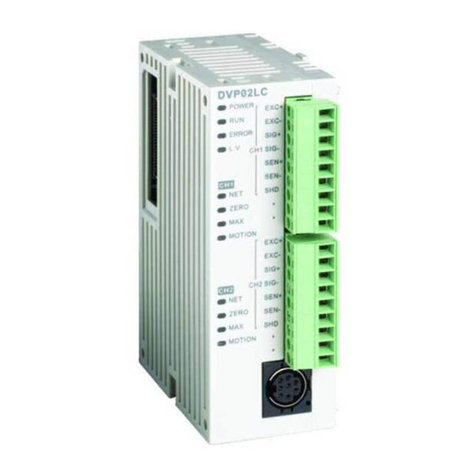
Delta
Delta DVP02LC-SL User manual

Delta
Delta AH500 series User manual

Delta
Delta MultiChoice T24 Series User manual

Delta
Delta DVP series User manual
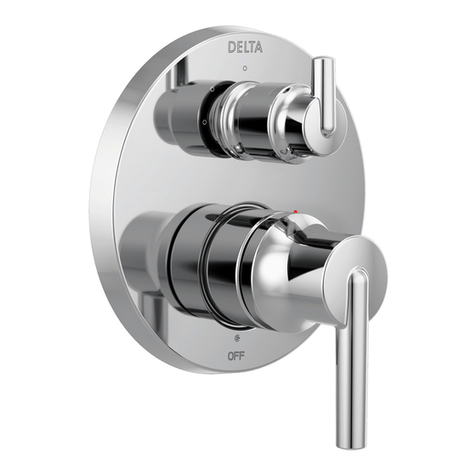
Delta
Delta MultiChoice T24859 Series User manual
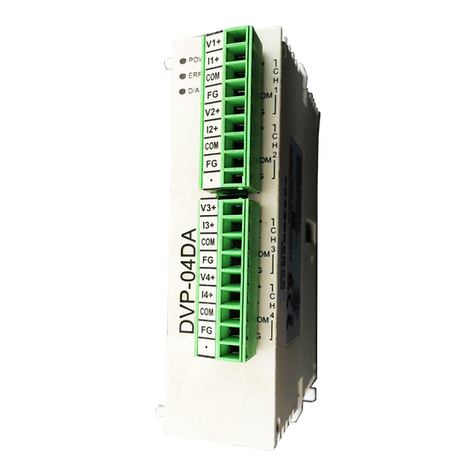
Delta
Delta DVP04AD-SL User manual

Delta
Delta HDMP_S100 User manual
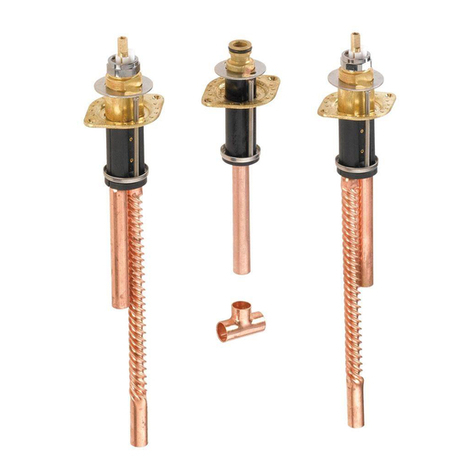
Delta
Delta R3707 User manual
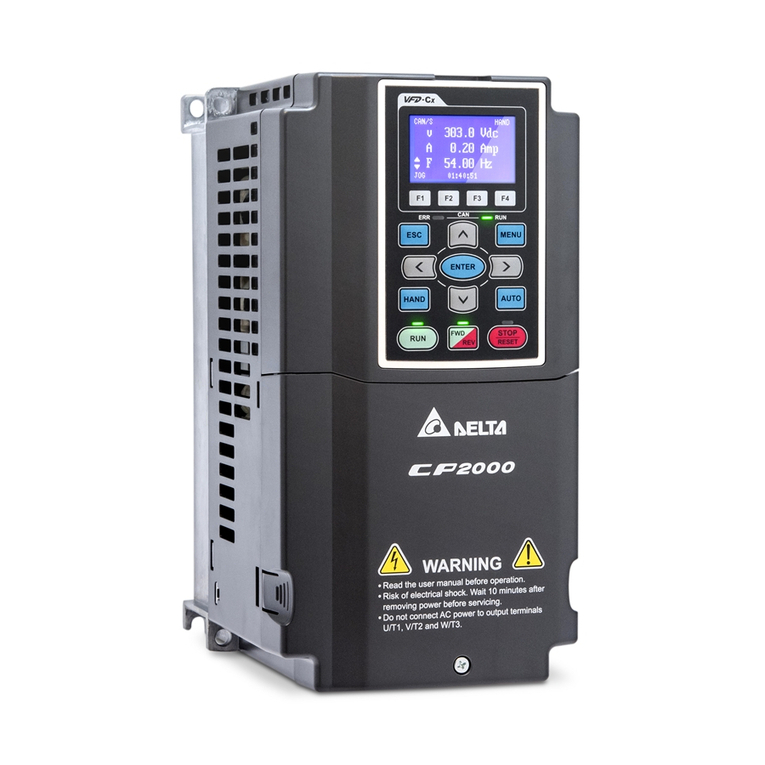
Delta
Delta CP2000 Series User manual
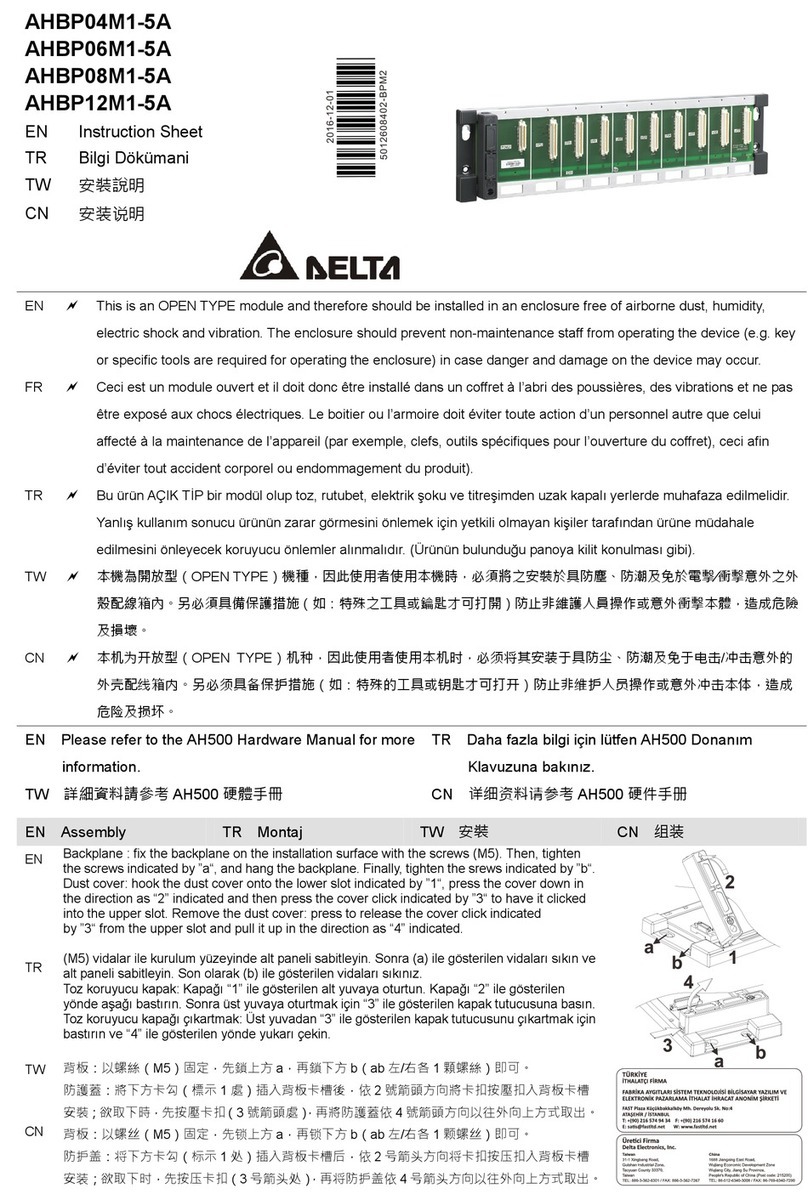
Delta
Delta AHBP06M1-5A User manual
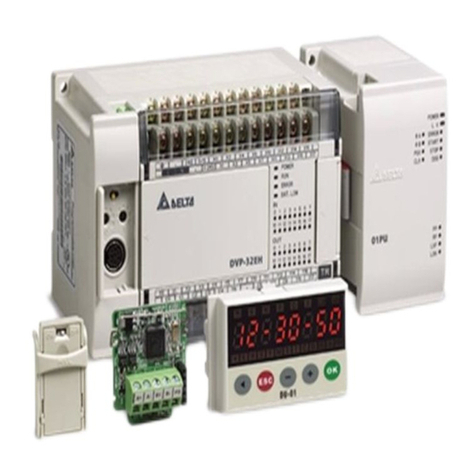
Delta
Delta DVP-02HC User manual
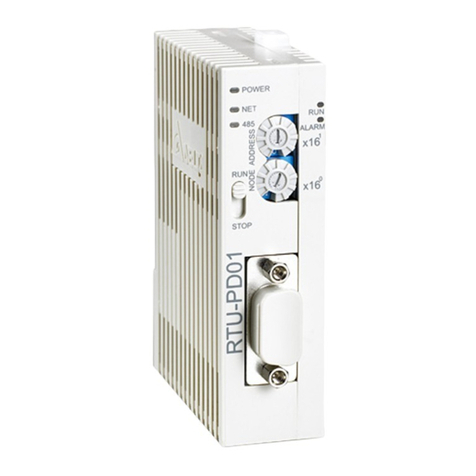
Delta
Delta RTU-PD01 User manual
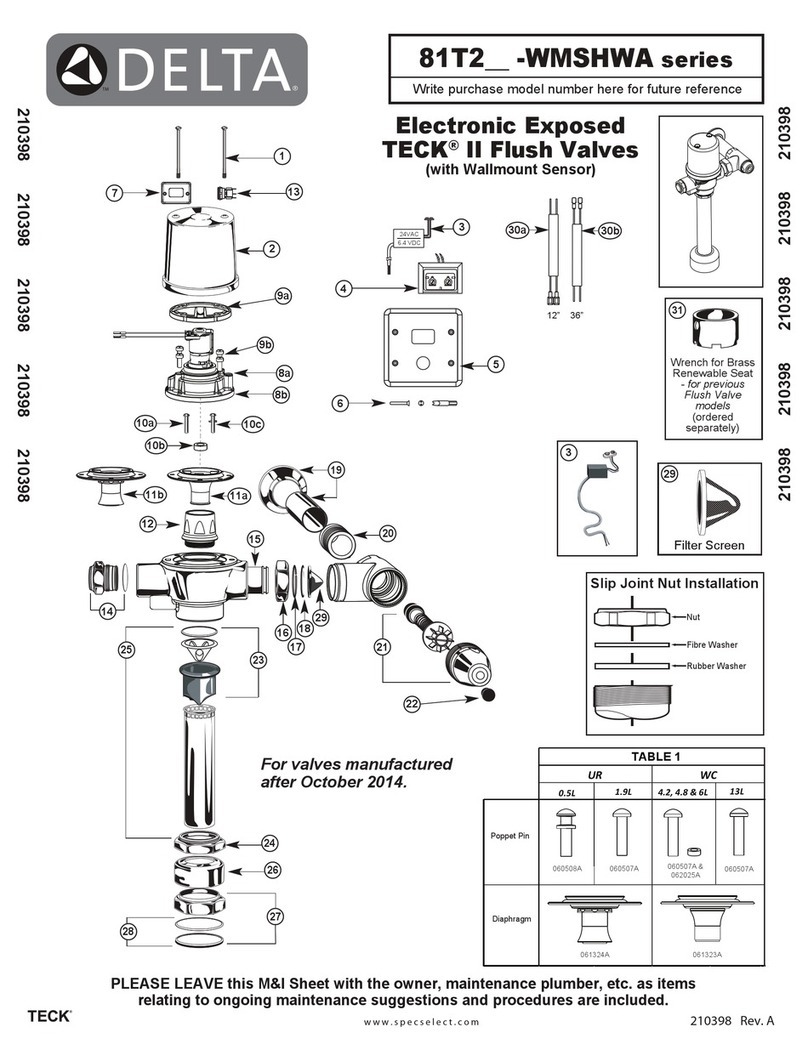
Delta
Delta TECK 81T2 -WHSHWA Series User manual
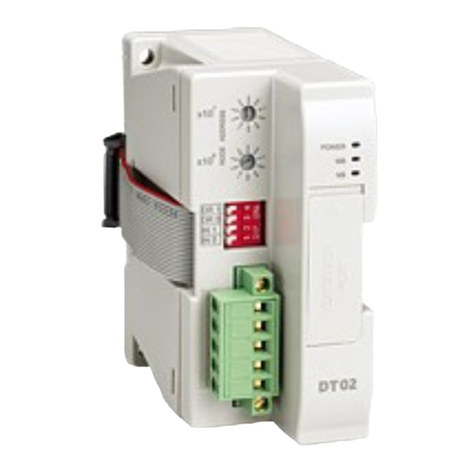
Delta
Delta DVPDT02-H2 User manual
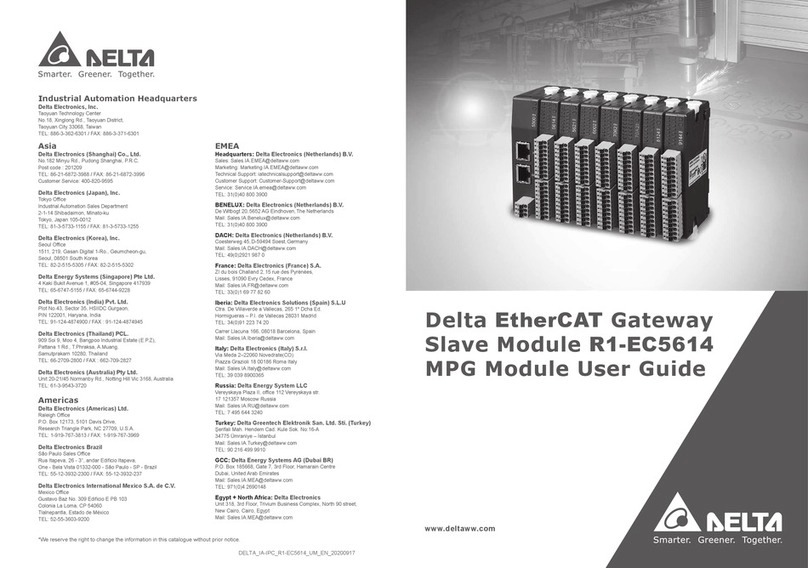
Delta
Delta R1-EC5614 User manual
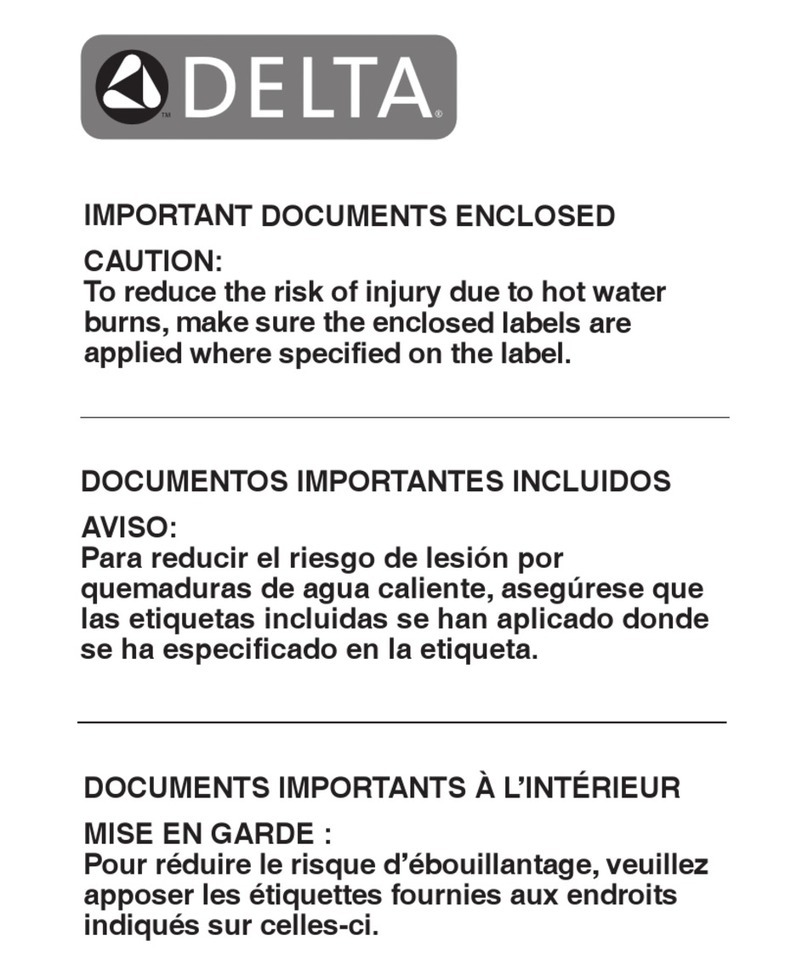
Delta
Delta MultiChoice T13020 User manual
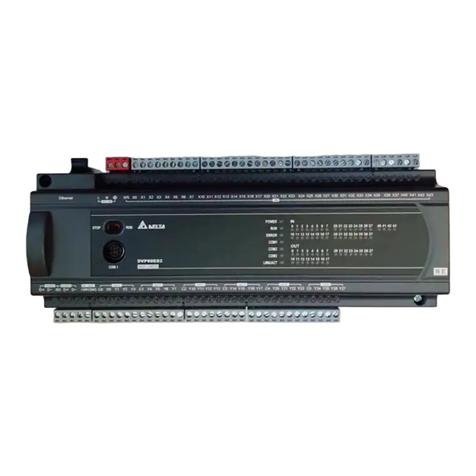
Delta
Delta DVPAEXT01-E2 User manual
